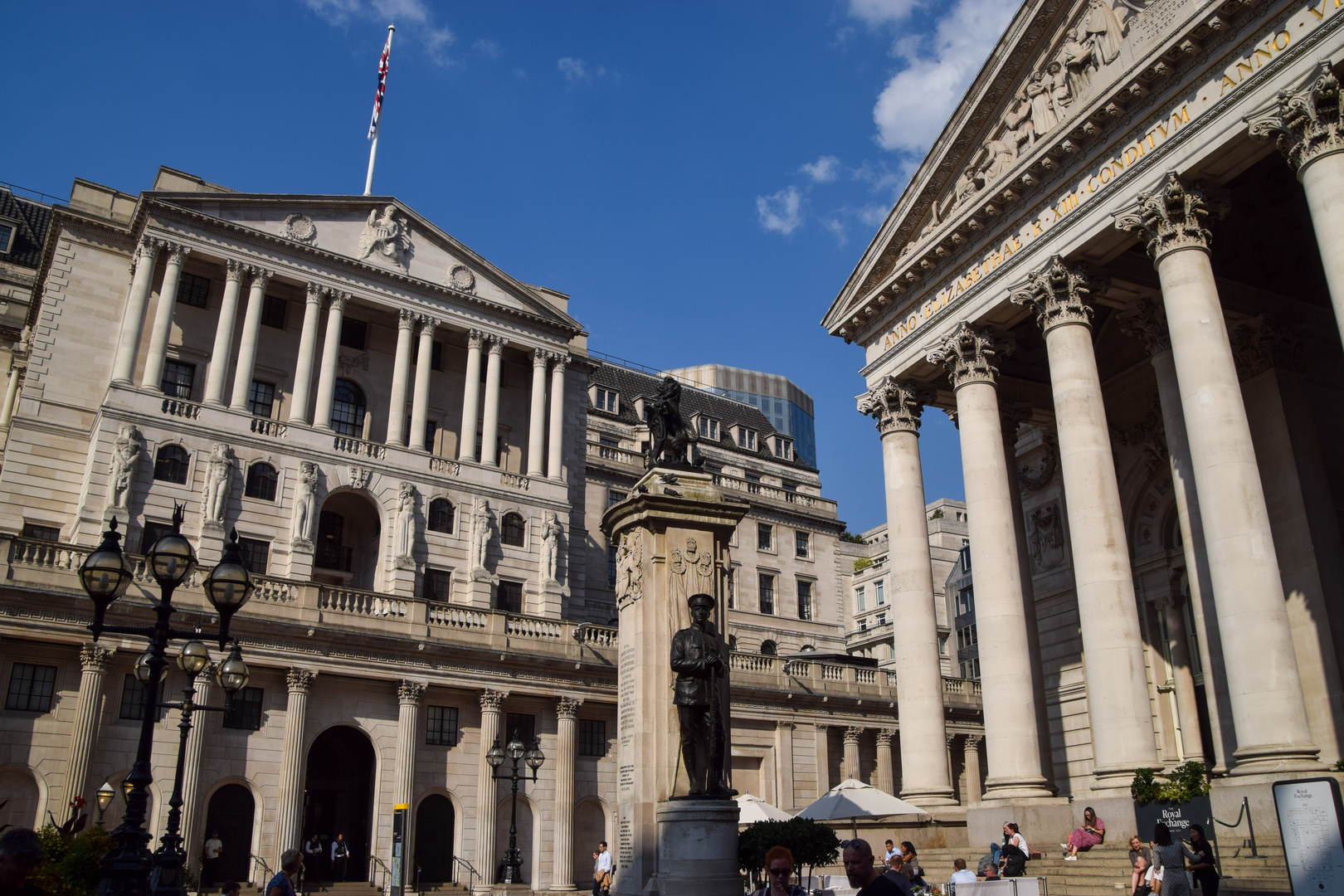Reform UK Calls on Bank of England to Halt Interest Payments to Lenders
The Bank of England is set to continue its interest payments on lenders’ deposits, amid criticism from Reform UK, which claims this practice wastes billions of taxpayer pounds.
Richard Tice, deputy leader of Reform UK, sent a letter to Andrew Bailey, the governor of the Bank of England, asserting that the central bank is favoring the financial sector over the broader public.
During its quantitative easing (QE) initiative, which ran from 2009 to 2021, the Bank of England generated approximately £895 billion by purchasing bonds from commercial banks, which subsequently deposited these funds at the central bank. Currently, about £700 billion in reserves earns interest at a base rate of 4.25%.
Reform UK advocates for the elimination of these interest payments, with support from notable figures including former Prime Minister Gordon Brown and ex-deputy governors of the Bank, Sir Paul Tucker and Sir Charlie Bean.
Some experts, such as former monetary policy committee member Gertjan Vlieghe, have argued that ceasing full interest payments could equate to a default on debts.
However, Tice contends this assertion is incorrect, stating, “This money was created out of thin air by the Treasury and the Bank of England to bolster the economy during times of crisis. It was never the rightful property of financial institutions. Notably, as interest rates rose, the profits of commercial banks surged, thanks to tens of billions paid out in this voluntary interest. These banks are benefiting disproportionately.”

In the past, when interest rates were low, the Bank reaped £124 billion from QE, which was transferred to the Treasury. With the recent increase in borrowing costs, the Bank is now incurring losses, which also impact the Treasury, while commercial banks thrive. Last year, four major banks—Barclays, Lloyds Banking Group, NatWest, and Santander UK—reported that they earned around £9.2 billion in interest from reserves in 2023.
Reform UK estimates that abolishing interest payments on central bank reserves could save the government as much as £35 billion annually, potentially funding significant tax reductions.
A representative of the Bank of England remarked that the governor elaborated on this subject during a recent Treasury select committee meeting. Bailey stated that maintaining the current interest rate encourages banks to keep some of their reserves with the central bank, thus supporting financial stability.
Any alteration to these interest payments, Bailey argued, could drive banks to relocate their reserves to UK government bonds, suggesting that any suspected advantage to public finances might be misleading.
Major banks have expressed their opposition to any changes as well. A representative from UK Finance, the industry trade association, stated that reducing reserve interest could have detrimental effects on the UK economy, likely causing higher costs for consumers and businesses.
Critics of the current system, established in 2006, assert that it stands out as an anomaly in global central banking practices. Historically, during the inflation crises of the 1980s, central banks did not provide interest on commercial bank reserves.
A tiered reserve system, similar to that adopted by the European Central Bank in 2023, has been proposed as a reform option. The ECB does not pay interest on the mandatory minimum reserves that lenders are required to keep, whereas the Bank of England has no such reserve requirement.
Q&A
Receiving interest on deposits is a common and accepted practice. Richard Tice argues that much of the money deposited by major lenders at the Bank of England was “created out of thin air.” Since the financial crisis, the Bank of England has bought £895 billion in bonds from commercial banks, which deposited this capital to earn interest at 4.25%, benefiting the largest banks substantially.
In 2012, the government entered an indemnity agreement with the Bank of England to cover any losses from its quantitative easing activities. Previously, when interest rates were lower, the Bank’s gain from QE reached £124 billion, which was redirected to the Treasury. However, with rising borrowing costs leading to losses for the Bank, the Treasury has already provided approximately £86 billion since late 2022. The Office for Budget Responsibility anticipates that total losses to taxpayers could reach around £133.7 billion.
Reform UK believes that by ceasing interest payments on commercial banks’ reserves, the Bank of England could save between £30 billion and £40 billion annually. Other estimates suggest potential savings could be closer to £50 billion per year. The transition to a tiered system, while preferred by certain reform advocates, is expected to yield smaller savings. The ECB, after implementing such a change in 2023, set a 0% interest rate on a portion of reserves, resulting in modest savings of around €6 billion compared to the €140 billion they currently pay to commercial banks each year.




Post Comment